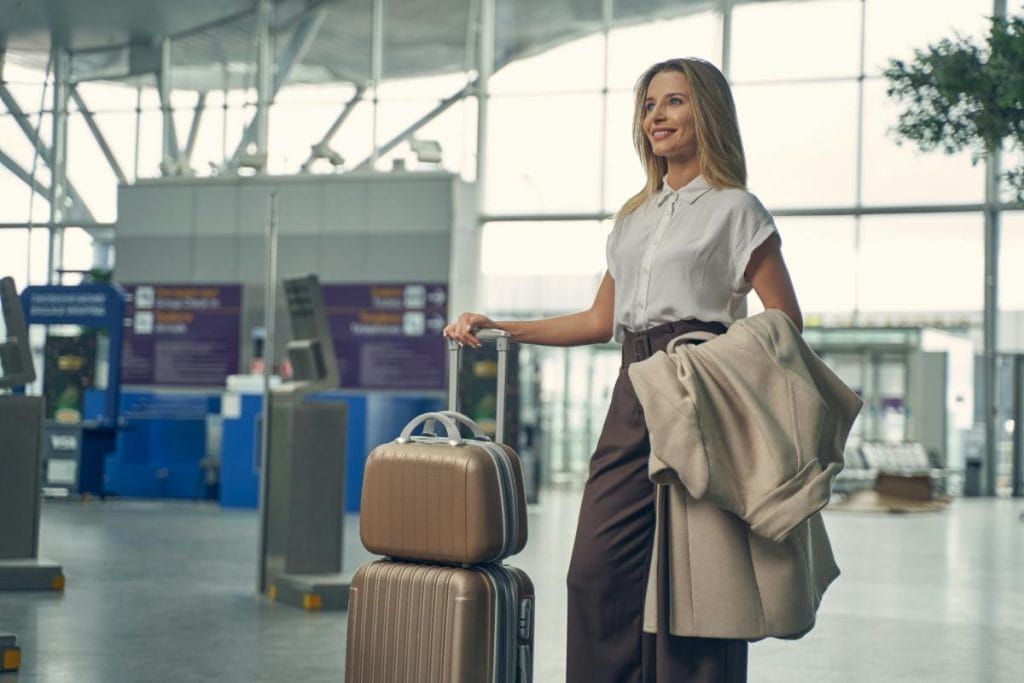
Business travel can be a real challenge. Tight schedules, unexpected delays, and the constant juggling of tasks can leave you feeling frazzled. But don’t worry! By implementing some effective time-saving strategies, you can significantly improve the efficiency of your next business trip, allowing you to focus on your objectives rather than getting bogged down in logistics.
Each of these strategies can help reduce stress and boost your productivity. By optimizing your planning and execution, you can create more productive travel experiences. When you approach these tactics methodically, you’ll find that they not only save you time but also improve your overall travel experience.
By adopting these strategies, you’ll find yourself better prepared for meetings and able to make the most of your time on the road. For truly seamless travel arrangements, consider looking into car hire services and try these simple yet effective tips to ensure smoother, more productive business trips.
1. Prioritize Your Agenda

Effective prioritization will help you accomplish essential tasks during your business trips, maximizing productivity and minimizing stress. Clear objectives and a thorough assessment of your travel necessities are key components of this process.
Set Clear Objectives
Establishing clear objectives helps define the purpose of the business trip. These objectives can be client meetings, networking opportunities, or conference attendance.
To set your objectives, consider questions like:
- What are the key outcomes you’re aiming for?
- Who are the necessary contacts you need to meet?
- What information must you gain from this trip?
Create a list of priority items to guide your daily activities. Using tools like digital planners or simple checklists can help you track your progress. Make sure to regularly review your objectives to ensure they remain aligned with your overall business goals.
Assess Your Travel Necessities
Taking the time to assess your travel necessities will streamline your preparation and minimize potential disruptions. This includes evaluating required materials, documents, and equipment.
Make a comprehensive list of all your essentials:
- Travel documents (e.g., tickets, ID, passport if needed)
- Meeting materials (e.g., presentations, brochures, business cards)
- Necessary technology (e.g., laptop, tablet, chargers, adapters)
By packing ahead and checking software compatibility, you can prevent last-minute issues. This focused approach allows you to move efficiently between activities while ensuring that you have everything you need for successful engagement.
2. Leverage Technology

In today’s business landscape, technology plays a key role in improving travel efficiency. By using specific tools, you can streamline your itinerary management and expense tracking, allowing you to focus on your core objectives.
Travel Apps for Itinerary Management
Travel apps can simplify your itinerary management by consolidating all your travel information into a single platform. You can input flight details, hotel reservations, and meeting schedules, making it easy to access everything in one place.
Popular apps like TripIt and Kayak offer features such as:
- Automatic integration with email confirmations
- Real-time flight updates
- Alerts for delays or cancellations
These tools can also share your itineraries with colleagues to keep everyone informed. This centralized approach minimizes miscommunication and improves coordination among team members.
Automated Expense Tracking
Automated expense tracking applications save time and reduce errors related to manual entry. Apps such as Expensify or Concur automatically compile expenses, making it easier to manage spending.
Key features include:
- Receipt scanning with mobile devices
- Categorization of expenses based on company policies
- Integration with accounting software
This technology helps with quicker reimbursements and reliable tracking of travel expenses, providing financial transparency for businesses. Using these tools can significantly reduce the administrative burden of business travel, letting you focus on the important stuff.
3. Pack Like a Pro
Effective packing techniques can significantly reduce the time you spend preparing for a business trip. By focusing on organization and practicality, you can ensure that you have everything you need without the chaos.
The Capsule Wardrobe Approach
The capsule wardrobe technique simplifies your clothing choices by selecting versatile pieces that can be mixed and matched. This method involves choosing a limited color palette, which makes it easier to coordinate outfits without overpacking.
Key elements of a capsule wardrobe include:
- Neutral Colors: Base your outfits in black, white, gray, or beige for easy coordination.
- Layering Pieces: Include lightweight jackets or cardigans to adapt to different temperatures and settings.
- Versatile Footwear: Choose shoes that work for both business and casual settings to minimize the number of pairs you need to pack.
By sticking with this approach, you can maximize your outfit combinations while minimizing luggage space. This makes packing more efficient and reduces decision fatigue during your trip.
Essential Gadgets and Gear
Packing the right gadgets can enhance productivity and connectivity while traveling. Prioritize lightweight, compact devices that fulfill multiple functions.
Must-have gadgets:
- Travel Adapter: A universal adapter ensures devices can be charged anywhere.
- Portable Charger: A power bank keeps electronics charged on the go.
- Noise-Canceling Headphones: These provide focus during travel disruptions.
Organizing gadgets in a dedicated pouch prevents tangles and saves time when accessing devices. Having essential tools readily available allows for smoother transitions between meetings and travel, enhancing overall efficiency.
4. Streamline Transportation

Efficient transportation is a must for getting the most out of your business trips. Choosing direct flights when possible and using ridesharing or public transportation can reduce travel time, allow you to work on the go, and simplify your logistics.
Choose Direct Flights
Booking direct flights is one of the most effective ways to save time. This eliminates layovers, which can add hours to your trip. When booking, use flight comparison tools to quickly identify non-stop options that fit your schedule.
Additionally, consider booking flights during off-peak hours. This often gets you better pricing and reduces the likelihood of delays. If you’re a frequent traveler, take advantage of loyalty programs, which may offer perks like priority boarding or access to premium lounges, adding to a more enjoyable travel experience.
Ridesharing and Public Transport Insights
Ridesharing services like Uber and Lyft provide convenient door-to-door travel. They offer flexibility and often save time compared to waiting for taxis. You can pre-schedule rides for timely pickups, especially for early flights or tight schedules.
Public transportation can also be a viable option, particularly in urban centers. It’s generally more cost-effective than taxis or ridesharing and can be faster in cities with heavy traffic. Research local transit schedules in advance to avoid delays. Using apps that provide real-time updates improves your travel efficiency, allowing you to adapt quickly to any unforeseen circumstances.
5. Optimize Your Accommodation
Choosing the right accommodation can enhance productivity during business trips. Key considerations include location and available facilities that cater to professional needs.
Stay Close to Your Venues
Selecting a hotel or rental close to meeting venues is crucial. This reduces travel time and minimizes the likelihood of delays.
When choosing accommodation, consider:
- Walking distance to conference centers or offices
- Availability of public transportation for easy commutes
- Surrounding amenities, such as restaurants for meetings or places to unwind
A well-located home base can save you tons of time and hassle.
Look for Workspace and Amenities
The right workspace significantly affects productivity. Ensure the accommodation offers a comfortable and functional environment.
Look for:
- Dedicated workspaces in rooms with desks and ergonomic chairs
- Reliable high-speed internet for communication
- Business centers providing printing and meeting spaces
Don’t forget to check for extras like fitness centers (great for de-stressing) and breakfast options (perfect for saving time in the morning).
6. Manage Your Time On-Site
Efficient time management while on-site can greatly impact the productivity of a business trip. Properly scheduling meetings and striking a balance between work and downtime enhances overall effectiveness.
Scheduling Meetings Strategically
Meeting times should be chosen to maximize productivity and minimize disruptions. Prioritize essential meetings first, seeing to it that discussions happen when energy levels are high and minds are focused.
- Morning Meetings: Early meetings often benefit from fresh minds. Schedule high-stakes discussions before afternoon fatigue sets in.
- Location Considerations: Choose meeting venues close to accommodations or event spaces. This reduces travel time and allows for quick transitions.
- Buffer Time: Include buffer periods between meetings. Allocating 15-30 minutes gives time to recharge and reflect on discussions, enhancing follow-up actions.
Using scheduling tools can assist in finding optimal times that accommodate all participants, fostering a more effective experience.
Balancing Work and Downtime
While it’s important to remain productive, adequate downtime is a must for maintaining energy levels. Efficiently balancing both can improve focus and creativity.
- Set Boundaries: Clearly define work hours and personal time. Communicating these boundaries allows for uninterrupted focus during work periods.
- Utilize Travel Time: Turn travel time into productive slots by reviewing notes, preparing for upcoming meetings, or catching up on emails.
- Short Breaks: Incorporate short breaks into the schedule. This helps prevent burnout and enhances concentration during work periods.
By prioritizing downtime, you can recharge your mental resources, ultimately contributing to better meeting outcomes and overall trip success.
By implementing these strategies, you’ll find yourself conquering business trips like a pro in no time. Remember, the key is to plan ahead, stay organized, and maintain a balance between productivity and self-care.
